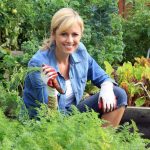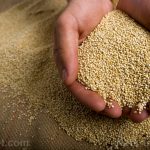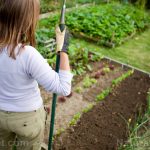
The healthy prepper: A guide to keeping fruits fresh without canning
Monday, November 05, 2018 by Michelle Simmons
http://www.starvation.news/2018-11-05-a-guide-to-keeping-fruits-fresh-without-canning.html

Eating fruits and vegetables is one of the most important ways to keep yourself healthy and surviving, but not when they are canned. The process of canning kills the nutrition and eliminates the real freshness of the food. Storing your produce or keeping them fresh for longer without compromising their nutritional content, so here are ways to keep food fresh without canning. (h/t to PreppersWill.com)
- Store them fresh: Fresh storage is a method that requires the least amount of preparation and effort. This works well for vegetables such as onions and garlic. You can take the plant directly and store them. The key to this method is to cure these vegetables properly before storing them. To cure them properly, you have to leave them out in a single layer or hang them in bunches in a warm, dry, and airy place like a garage. Your garlic and onions will be ready to be stored in crates and boxes after two weeks.
- Put them in the fridge: This method is the easiest way to store sturdy vegetables like carrots and beets. With this method, your produce can last until the end of the winter season. Harvest your vegetables during late fall, right before winter starts and the temperature gets freezing. Do not remove the soil from the roots, pack them into plastic bags, and put them on the bottom shelf of the fridge.
- Place them in the freezer: Storing vegetables in the freezer can prolong their shelf life. However, you have to steam or blanch them first. The best types of freezers for this purpose are chest freezers. This is because regular kitchen freezers have a defrost cycle, which can lower the food quality after a while and shorten the storage time from a year or shorter.
- Ferment them: There are some fruits and vegetables that may require more preparation and effort to maintain their freshness when storing. Fermentation can prolong the shelf life of produce for up to a year. Fermented foods also retain much more nutritional benefits compared to canning, at the same time providing good bacteria in the gut. Some fruits and vegetables that can be fermented include cucumbers, cabbages, carrots, lemons, and mangoes. In fermentation, temperature and container play a crucial role. The best temperature for fermentation is 68 to 72 degrees Fahrenheit. Containers should also be properly sealed to ensure low oxygen levels.
- Dehydrate them: Dehydration is one of the oldest and easiest ways to store food. This process involves removing water from the food to make the food lighter. The lack of water in food also prevents the growth of bacteria, yeasts, or mold. Any type of fruit, vegetable, or herb can be dehydrated, but some needs to be blanched first before drying to prevent the enzyme reactions. This method is also particularly useful when traveling because it does not need refrigeration and the foods are light. (Related: What To Do With All Your Extra Produce And Herbs.)
Other ways to keep fruits and vegetables fresh for longer
In addition to the methods mentioned above, here are more tips to keep fruits and vegetables fresh for longer:
- Give berries a hot bath for 30 seconds before storing them to kill mold spores and keep them fresher for longer.
- Do not put tomatoes in the fridge. Instead, put them in a bowl lined with a paper towel.
- Wrap your unwashed leafy green vegetables in a paper towel, put them in a plastic bag, then store in the fridge.
- Give your lettuce an ice bath to refresh them.
- Put your ripened bananas in the fridge.
Read more news stories on storing food by going to Preparedness.news.
Sources include:
Tagged Under: Tags: canning, dehydration, fermentation, Food storage, food supply, Fresh, fruits, Homestead, homesteading, how to, organics, preparedness, prepper, prepping, survival, survival food, vegetables





